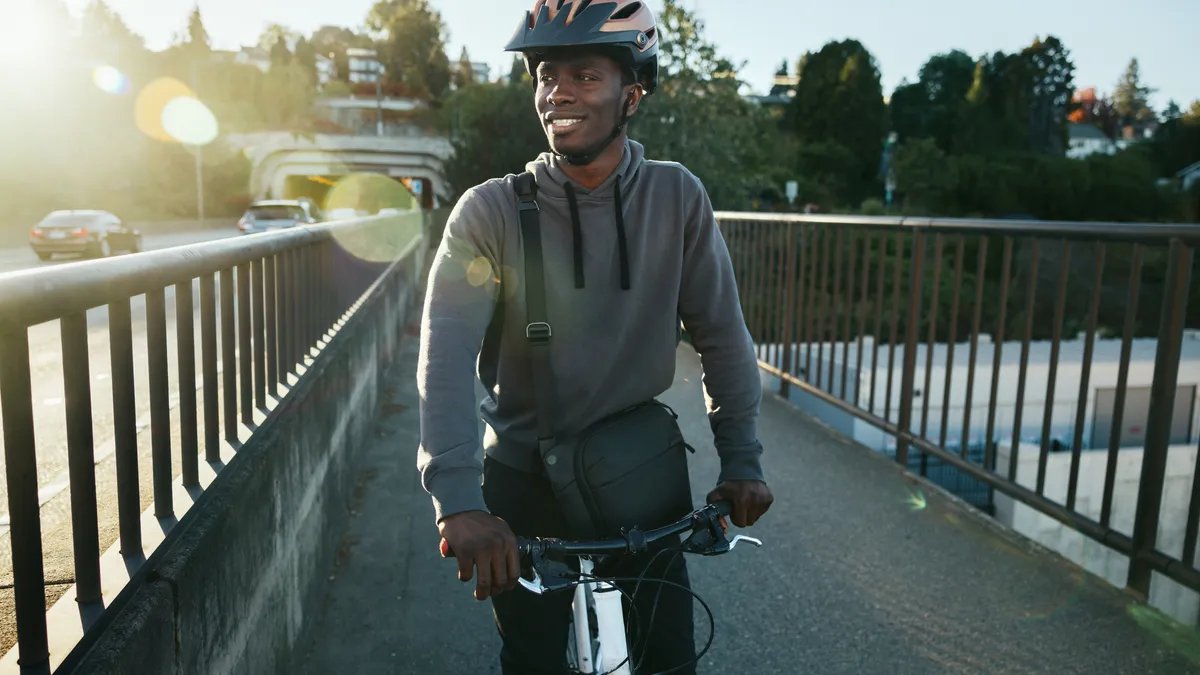Dive Brief:
- The Seattle Department of Transportation published a guide to reducing transportation emissions this month in order to fulfill the goals set forth in the mayor’s One Seattle Transportation and Climate Justice Executive Order.
- The executive order, signed Dec. 7, 2022, aims to achieve a 100% zero-emission city fleet by 2030, plan for three low-pollution neighborhoods by 2028 and update bicycle and pedestrian plans to make permanent 20 miles of “healthy streets closed to pass-through traffic.”
- According to the Seattle mayor’s office, transportation accounts for 61% of the city’s greenhouse gas emissions. Through the six strategies in Seattle DOT’s new Climate Change Response Framework, the agency looks to create a mode shift by 2030 that would nearly halve the trips taken with fossil-fuel powered vehicles, more than double the trips taken on transit and increase walking and biking.
Dive Insight:
Seattle may fail to meet the goals outlined in the city’s 2013 Climate Action Plan, which called for achieving net-zero greenhouse gas emissions by 2050 and preparing for the expected impacts of climate change, the mayor’s office said. In response to the mayor’s executive order, the Seattle DOT outlined six strategies in the framework document to speed up efforts to reduce transportation emissions and make sustainable transportation modes more accessible. These include:
- Accelerating work that benefits historically underserved communities and collaborating with these communities to create solutions.
- Making it easier for people to choose walking, biking or using scooters for short trips by improving streets, expanding and lowering the cost of bike and scooter rentals, adding parking for micromobility vehicles and developing community mobility hubs to provide transportation connections.
- Encouraging transit-oriented development, improving transit reliability and supporting the expansion of Sound Transit’s light-rail network.
- Supporting programs that help people choose zero-emission travel modes, such as new payment options across all sustainable transportation options, expanding reduced transit fare programs and seeking changes in off-street and on-street parking policies and pricing.
- Promoting more climate-friendly goods and delivery services by increasing the number of loading zones for businesses, right-sizing delivery fleets and making zero-emission delivery options more affordable and practical.
- Fostering the electrification of personal and commercial vehicles, helping transition the transit system to zero-emission vehicles and committing to electrifying the city vehicle fleet.












